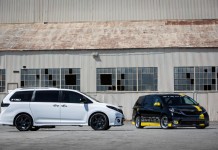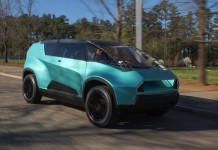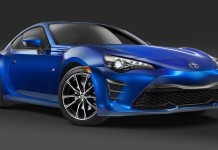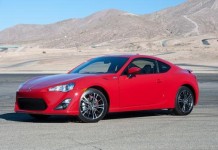Few cars of the last decade have had the impact of the Toyota Prius hybrid. It wasn’t the first hybrid vehicle to enter the U.S. market, and the first-generation Prius had a quiet reception here, as it was too small, too slow and too conservatively styled to get much attention outside the hard-core environmentalist community.
In contrast, the current-generation Prius, introduced in 2004, has attained celebrity status. It’s not just that it’s roomier, more fuel-efficient and cleaner-burning than the original, although these are all good reasons to consider buying one. It’s that this midsize hybrid hatchback looks like no other car on the market and thus allows its driver to make a personal and political statement. Add in the ability to drive a Prius solo in the carpool lane in California, its biggest market, and it’s clear the 2007 Toyota Prius will continue to sell in brisk numbers.
The heart of the original Toyota hybrid car is a gas-electric drivetrain the company calls Hybrid Synergy Drive. In the Toyota Prius, the setup consists of a 1.5-liter four-cylinder gasoline engine paired with an electric-drive motor that draws power from a nickel-metal hydride battery pack (mounted under the car’s rear hatch area) — together they make 110 hp. A second electric motor functions solely as a generator, recharging the batteries. The primary electric-drive motor can also rejuice the batteries, using energy recaptured during braking. It sounds complicated, but a simplified continuously variable transmission (CVT) deftly shuffles power between the sources, providing smooth, seamless operation from the Prius driver’s point of view. The Prius’ claim to fame is its ability to operate under electric power alone at low speeds, which contributes to its low fuel consumption. With a combined EPA rating of 55 mpg, this is the most fuel-efficient car on sale in the U.S. for 2007.
As technologically sophisticated as the Toyota Prius is, it’s a remarkably practical car to drive on a day-to-day basis. Its interior is spacious enough to accommodate a family of four in comfort, and a tight turning radius combined with light, electric-assist steering makes it extremely easy to maneuver in crowded urban areas. The one thing the Prius doesn’t offer is excitement, as its frugal drivetrain and modest handling capability make it one of the most tepid midsize cars on the road. This likely explains the introduction of the ’07 Prius Touring model, which should provide slightly crisper handling along with a sportier look. If you’re shopping for a Prius, you should also consider the similarly priced Honda Civic Hybrid. Its acceleration is equally pokey but it has better road manners and more mainstream styling. For those who can spend a bit more, Toyota’s own Camry Hybrid offers a larger interior and all the comforts of a regular Camry. If you want to wear your green commitment on your sleeve, though, there’s no better choice for a hybrid car than the 2007 Toyota Prius.
Body Styles, Trim Levels, and Options
Options are grouped in packages and include leather seating, an MP3 player input jack and a nine-speaker JBL audio system with an in-dash CD changer, a DVD-based navigation system, a rear backup camera and Bluetooth wireless technology. The available Smart Key system allows you to lock/unlock the doors and start the car with the key safely in your pocket or purse. Any Prius equipped with the nav system has a voice-command system that covers everything from temperature adjustment to Bluetooth cell phone dialing.
Powertrains and Performance
Safety
Interior Design and Special Features
Driving Impressions
| Exterior | |
| Length: 175 in. | Width: 67.9 in. |
| Height: 58.7 in. | Wheel Base: 106.3 in. |
| Ground Clearance: 5.6 in. | Curb Weight: 2932 lbs. |
| Interior | |
| Front Head Room: 39.1 in. | Front Hip Room: 51 in. |
| Front Shoulder Room: 55 in. | Rear Head Room: 37.3 in. |
| Rear Shoulder Room: 52.9 in. | Rear Hip Room: 51.6 in. |
| Front Leg Room: 41.9 in. | Rear Leg Room: 38.6 in. |
| Luggage Capacity: 14.4 cu. ft. | Maximum Seating: 5 |
| Performance | |
| Base Number of Cylinders: 4 | Base Engine Size: 1.5 liters |
| Base Engine Type: Inline 4 | Horsepower: 110 hp |
| Max Horsepower: 5000 rpm | Torque: 82 ft-lbs. |
| Max Torque: 4200 rpm | Drive Type: FWD |
| Turning Circle: 34.1 ft. | |
| Fuel | |
| Fuel Tank Capacity: 11.9 gal. | |
| EPA Mileage Estimates: (City/Highway) | |
| Automatic: : 60 mpg / 51 mpg | |
| Range in Miles: (City/Highway) | |
| Automatic: 714 mi. / 606.9 mi. | |








